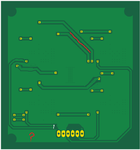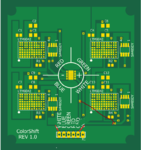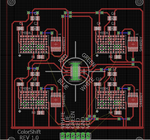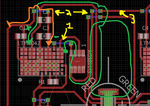WBrumble
Junior Member level 3
All,
This is my first PCB build and I've got some questions before finalizing and moving to fabrication.
It's a 2 layer board, with led drivers (for RGBW), 12 volt supply, LED drivers running at 2mhz, and a maximum of 4 amps, 1 amp per color die.
The inputs at the bottom are; White, Red, Green, Blue are PWM inputs, and VCC/GND.
Board outline dimensions 3 3/16"x 3"
Two questions I have:
- Do I need to worry about EMI at 2mhz?
- What spacing for ground vias do I use between to top and bottom layer ground pours?
One more question not really related directly to the PCB design, could someone point me to a good read for thermodynamics and heatsink calculations/design.
Here are exported photos from eagle of the top and bottom of the board "if you see any issues please let me know":
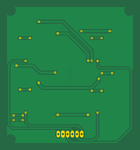
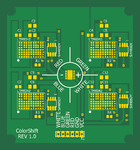
Thank you guys in advance for the help!
This is my first PCB build and I've got some questions before finalizing and moving to fabrication.
It's a 2 layer board, with led drivers (for RGBW), 12 volt supply, LED drivers running at 2mhz, and a maximum of 4 amps, 1 amp per color die.
The inputs at the bottom are; White, Red, Green, Blue are PWM inputs, and VCC/GND.
Board outline dimensions 3 3/16"x 3"
Two questions I have:
- Do I need to worry about EMI at 2mhz?
- What spacing for ground vias do I use between to top and bottom layer ground pours?
One more question not really related directly to the PCB design, could someone point me to a good read for thermodynamics and heatsink calculations/design.
Here are exported photos from eagle of the top and bottom of the board "if you see any issues please let me know":


Thank you guys in advance for the help!
Last edited:
